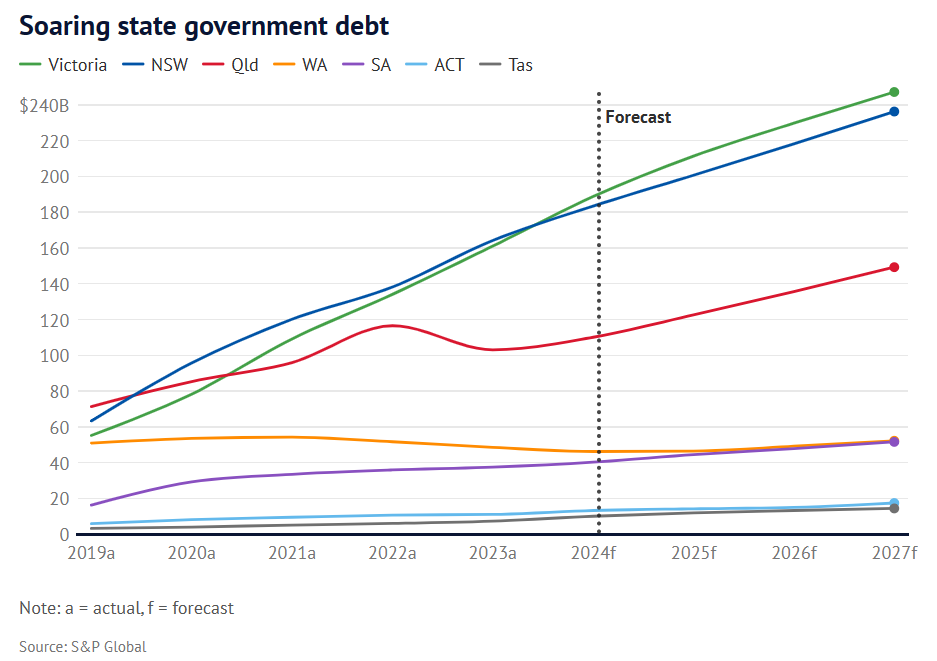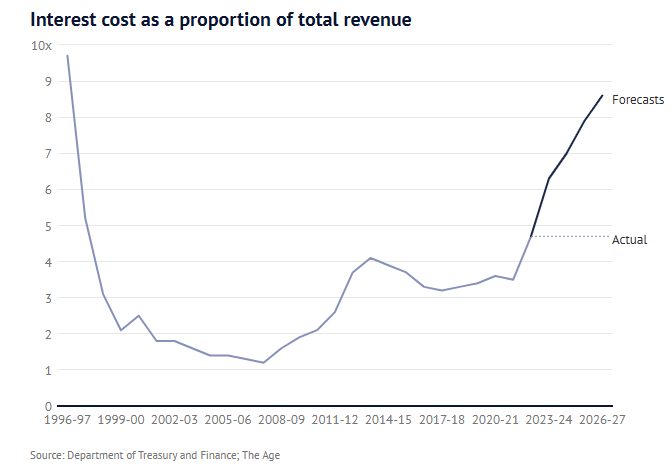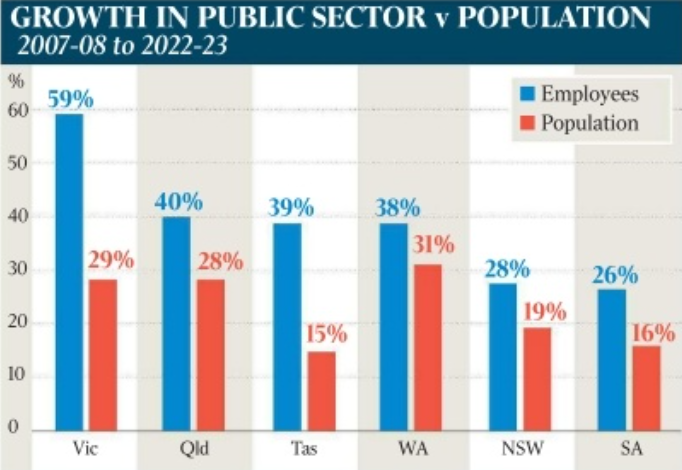On Thursday, Victorian Treasurer Tim Pallas was interviewed about the additional $837 million blowout in the cost of the Metro Tunnel Project, which was originally costed at $10.9 billion when it was first announced in the 2016 State Budget, but several escalations have pushed the price tag to $13.48 billion.
There have been massive cost overruns on other major projects, including:
- The West Gate Tunnel project, whose cost is projected to double its initial $5 billion price tag.
- North East Link, originally planned to cost $10 billion, was revised to $15 billion before blowing out to $26 billion.
- Airport Rail Link, whose cost has risen from $10 billion to a projected $15 billion.
- The Suburban Rail Loop, whose total cost is projected to exceed $200 billion, roughly four times its initial announced cost.
Treasurer Pallas said that the additional cost for the Metro Tunnel would come from the state’s consolidated fund, its primary financial account. However, the money is yet to be accounted for.
“To the extent that this is additional expense on the ledger, it will have an impact around the state’s debt position unless, of course, I can find offsetting value for the state”, he told reporters.
“That’s exactly what I’m looking for at the moment”.
“We don’t anticipate that we’ll be able to do much in the space of taxes, given the budget before last was substantial”, he said.
The reality is that the latest cost overrun can be funded in one of three ways:
- Further borrowings (debt).
- Increased taxes.
- Cutbacks elsewhere.
Victoria already has the highest state debt and the nation’s lowest credit rating. State government debt has grown by 319% in the decade since Labor took power.

Per capita public debt in Victoria stood at $28,000 per person in 2023-24, 40% higher than other major states.

Debt servicing costs have increased by over $1 billion each year.

One area where the government should cut back is the bureaucracy (not front-line staff, like teachers, nurses, and police).
Victoria’s public sector workforce ballooned by 59% over the 15 years to 2022-23, easily exceeding the state’s population growth of 29%. That was more than double NSW, whose public sector workforce grew by 28% off a population increase of 19%.

Source: The Australian
Victoria’s public servant wage bill expanded by 152% over the same 15-year period, easily outpacing the rest of Australia. By comparison, NSW’s public sector wage bill grew by 87%.

Source: The Australian
Put simply, Victoria’s public service has lots of fat that is ripe for trimming.
The state government could save billions by slashing the number of back office bureaucrats who add little value.
I discussed these issues with Jacqui Felgate on Radio 3AW:

